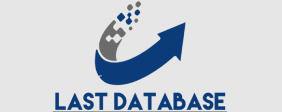The email header is one of the most important parts of your email marketing campaign. It’s the first thing your subscribers will see, and it will determine whether or not they open your email. If you make a mistake in your email header, you could be killing your open rates. In this blog post, we’ll discuss 10 email header mistakes that will kill your open rates. We’ll also provide tips on how to write effective email headers that will get your emails opened. 1. Using a boring subject line your subject line is the first thing your subscribers will see, so it’s important to make it interesting. If your subject line is boring, your subscribers are less likely to open your email. Here are a few tips for writing an interesting subject line: keep it short and to the point. Use strong, active verbs. Add a sense of urgency.
Use emojis or other visuals
Personalize the subject line. 2. Using all caps using all caps in your subject line is considered to be shouting, and it’s likely to annoy your subscribers. Instead, use a mix of upper and lowercase letters to make your subject line more readable. 3. Using spammy words there are certain words that are associated with spam, such as “free,” “win,” and “click here.” if you use these words in your subject line, your email is more likely to end up in Ghost Mannequin Service your subscribers’ spam folders. 4. Sending too many emails if you send too many emails, your subscribers are more likely to unsubscribe from your list. A good rule of thumb is to send no more than one email per week. 5.
Not personalizing your emails personalizing your emails
Is a great way to increase open rates. When you personalize your emails, you show your subscribers that you’re interested in them, and they’re more likely to open your emails. There are a few different ways to personalize your emails. You can use your subscribers’ names, their interests, or their purchase history. 6. Not using a pre-header text the pre-header text is BR Lists the text that appears below the subject line in some email clients. It’s a great opportunity to give your subscribers more information about your email, and it can help to increase open rates. 7. Using a generic sender name your sender name should be clear and concise. It should tell your subscribers who the email is from, and it should be easy to remember. 8. Not using a clear call to action your call to action should tell your subscribers what you want them to do.







